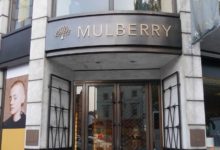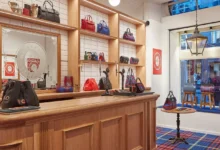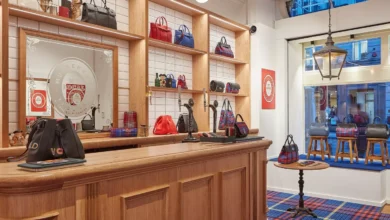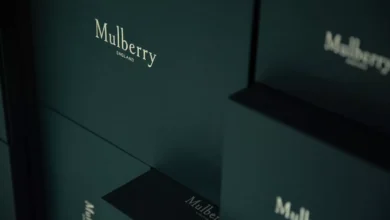A look at Mulberry’s financial struggles and future prospects
Mulberry’s resistance to Frasers Group highlights the board’s desire for an owner with a long-term vision aligned with the luxury market’s nuances

Once a darling of the British fashion scene in the 2000s, Mulberry was a go-to accessory for trendsetters like Alexa Chung with its signature leather handbags, such as the Bayswater. However, the group is now grappling with a financial crisis, reporting a pre-tax loss of £34.1m for the year ending March 2024, and facing an 18% drop in sales in the following months. Amidst a slowdown in the luxury sector and rising costs, Mulberry has become embroiled in a takeover battle – turning down an £83m offer from Mike Ashley’s Frasers Group and openly welcoming the idea of a bid from luxury conglomerate LVMH.
Frasers Group has been a key shareholder in Mulberry since 2020, and holds a 37% stake. Last month, Frasers made the offer to fully acquire the brand. As it already owns high-end retail chains Flannels and MatchesFashion, acquiring Mulberry would be another step in the expansion of its luxury portfolio. Ashley hopes that, by elevating its offering, Frasers will tap into a younger and more affluent audience. Frasers’ argument for taking over Mulberry also centres on integrating it into its department store and online operations, including the fast-growing Flannels chain.
That said, Mulberry’s board is resistant and swiftly rejected Frasers’ offer. The company’s largest shareholder, Challice Limited – a Singaporean investment firm owned by Christina Ong and her husband – rejected the bid as well. Challice controls 56% of Mulberry’s shares and deemed the offer “poorly timed”, especially with Mulberry in the early stages of a new turnaround strategy under CEO Andrea Baldo.
Appointed earlier this July, Baldo, has yet to reveal his plans for the brand, but insiders believe his commercial acumen and focus on the British market could be key to reversing Mulberry’s fortunes. However, the immediate challenge for Mulberry is financial; the brand needs capital, having announced a £10m share issuance to shore up its balance sheet. Without new cash flow, the future looks precarious.
Mulberry’s resistance to Frasers Group highlights the board’s desire for an owner with a long-term vision aligned with the luxury market’s nuances – an area where Frasers lacks expertise despite its growing luxury portfolio. Industry insiders believe Mulberry could thrive under a company like LVMH, Kering, or Richemont, which specialise in managing heritage brands.
For Mulberry, LVMH offers the kind of prestige and resources that could restore its status in the luxury sector. LVMH’s vast network and track record with brands like Louis Vuitton and Dior could provide the operational know-how and market access Mulberry desperately needs. Moreover, a luxury conglomerate could offer the capital for product innovation and global expansion without undermining the brand’s identity, unlike Frasers, which is often seen as a mass-market player dabbling in luxury.
So what went wrong for Mulberry? In recent years, the company overextended itself, particularly with an ambitious plan to reposition the brand upmarket. This move alienated core customers and led to a string of profit warnings. To make matters worse, Brexit and the end of tax-free shopping for tourists hit Mulberry hard, as its appeal among international shoppers waned. In a luxury market increasingly driven by global, status-conscious consumers, Mulberry wasn’t able to maintain its relevance under these circumstances.
The broader slowdown in the luxury market post-pandemic has only compounded these issues; many mid-tier luxury brands like Mulberry are being squeezed out by a “super-brand” economy, where only the biggest names thrive. Customers who once bought Mulberry bags now turn to brands like Chanel or Gucci for their luxury fix, while younger, more fashion-forward audiences gravitate toward newer, trendier labels. Mulberry, in trying to keep up with this shift, seems to have lost touch with what made it distinct in the first place – its craftsmanship, heritage and accessible luxury positioning.
Mulberry’s struggles are emblematic of the broader pressures facing mid-tier luxury brands in an increasingly polarised market. Without a clear brand identity and the capital to innovate, Mulberry risks being left behind. While Frasers Group could offer a temporary lifeline, the brand’s best bet lies in aligning with a luxury powerhouse like LVMH, which could help it navigate the challenges of the modern market while staying true to its heritage.
As CEO Andrea Baldo prepares to roll out his turnaround strategy, Mulberry’s future depends not just on shoring up its finances, but on rediscovering its place in the luxury ecosystem.







